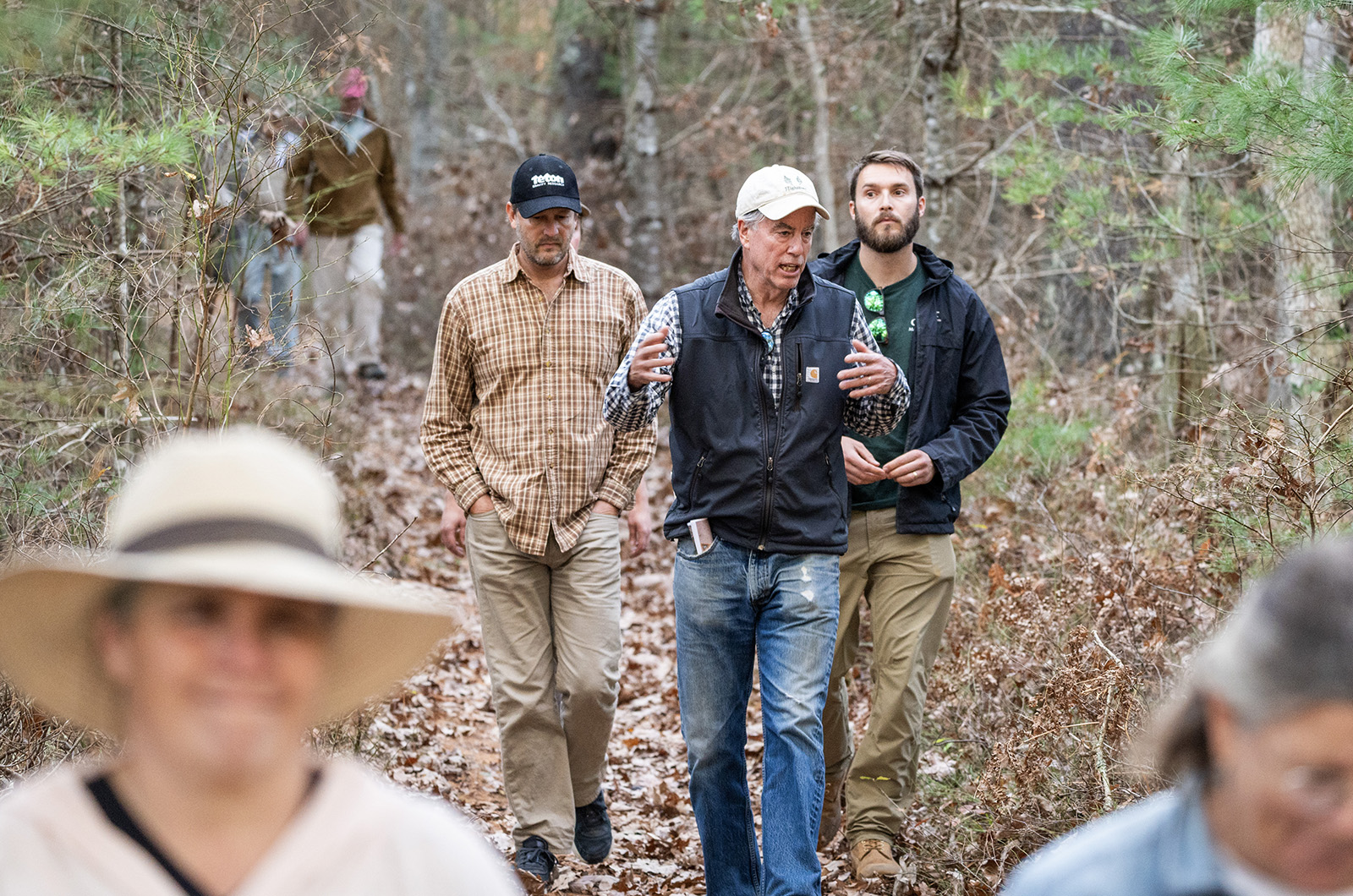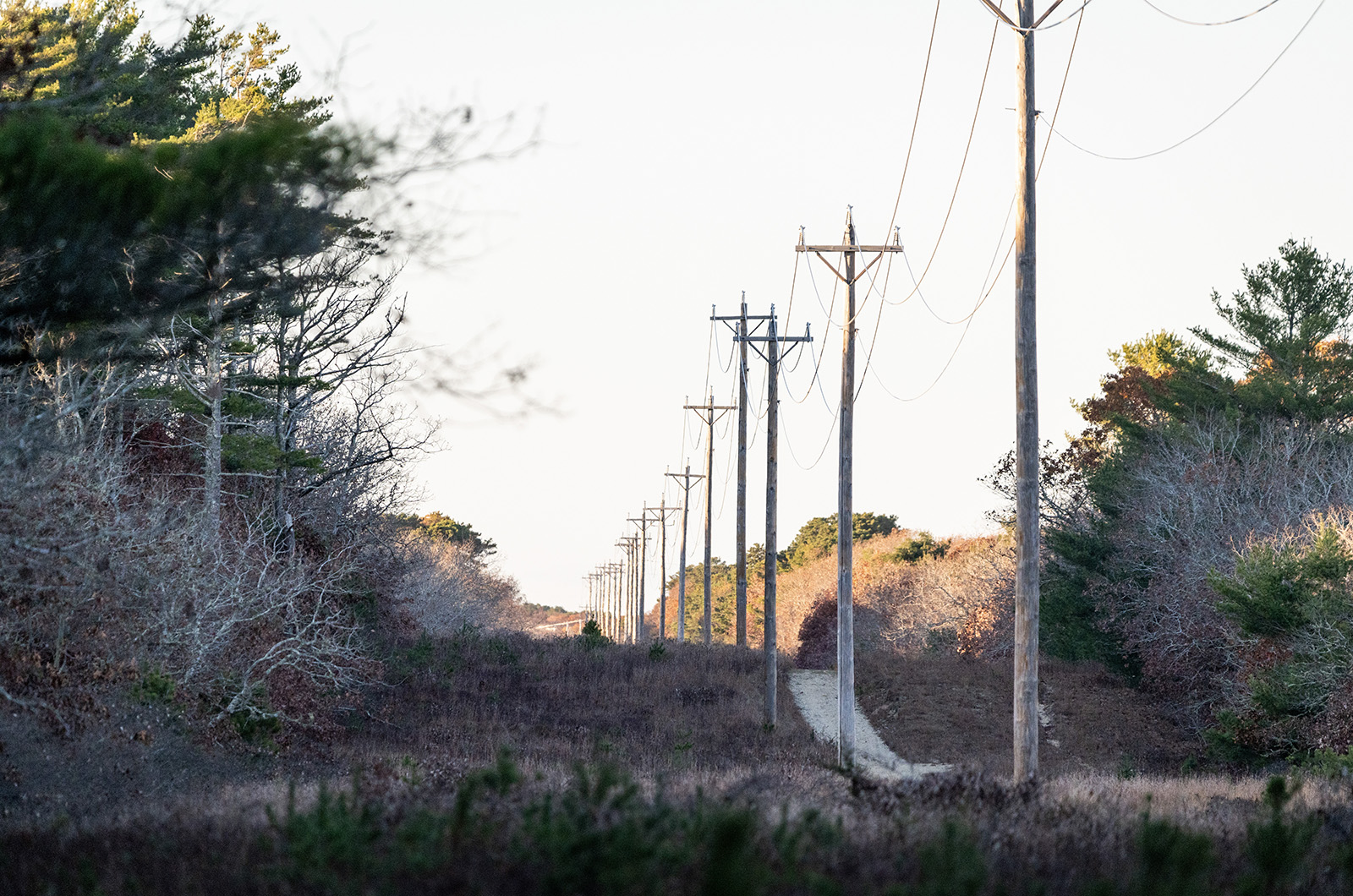A proposal by the Department of Conservation and Recreation (DCR) to remove an extensive area of white pine trees across 175 acres of Manuel F. Correllus State Forest is facing pushback from local forestry experts.
Last Friday, DCR management forester Paul Gregory led a tour through the forest to detail the plan, which he said will meet requirements set by the Natural Heritage and Endangered Species Program to mitigate the environmental disturbance that occurred when fire breaks in the forest were extended in 2001.
The initial stage would cover 79 acres in the southeast corner of the forest.
Mr. Gregory said that removing the white pine population would enable native plants to thrive, and allow for the areas to be restored to either sandplain heathlands or pitch pine oak woodlands.
“We don’t want the white pine because they are getting in the way of providing the habitat needed for the rare species [in the forest],” Mr. Gregory said during the walk. “It overpowers the oak, overpowers the scrub oak. It’s not at its full potential for rare species habitat.”
He also cited the risk of wildfire as an objective for the project.
“If we maintain it, we can keep it at a lower risk,” Mr. Gregory said.
Following the walk, local ecologist David Foster sent a letter to DCR outlining his issues with the plan, which he feels would be a “disaster.”
Mr. Foster is a member of the state’s Climate Forestry Committee and the Martha’s Vineyard Commission’s Manuel Correllus State Forest task force. He also served as the director of Harvard Forest and is a resident of West Tisbury.
“It’s hard to describe it as anything other than environmental disaster,” Mr. Foster told the Gazette. “That’s a big activity and my concern is that before DCR undertakes anything that scale, that they work on much simpler and in some ways much more pressing issues.”
Mr. Foster said he is in agreement that some white pines should be removed, but was taken aback by the size and scope of the proposed project. According to Mr. Foster, the history of the tree on the Island is complicated. The majority of the white pines in the state forest were planted between 1925 and 1941, over 400 acres of which were planted by the Civilian Conservation Corps.
“White pine grows all across New England, and it grew on Martha’s Vineyard for thousands of years, but right at the time of European settlement it wasn’t growing here,” he said. “Because it was planted, it is considered not native, but the trees are doing remarkably well. It seems like if you want to support resilient forests and resilient landscapes, you want to let the things that are doing really well grow.”
He feels that the focus should not be on areas where the pines have already settled, but in places where they are beginning to encroach on the native oak forests.
“Those are getting established and they are going to grow up and change and degrade the native forest. The idea would be to go in and simply cut them down. That’s a very simple task that somebody with just a chainsaw would do,” Mr. Foster said.
He added that his recommendation for a more scaled-down approach, which he also made to DCR 25 years ago, would result in a smaller carbon impact. Less work with machines would emit less carbon, and because fewer trees would come down, the impact on the amount of carbon dioxide stored by the forest would not be as large.
In response to Mr. Foster’s arguments, Mr. Gregory told the Gazette: “We are following our obligations to Natural Heritage as stated.”
Mr. Gregory also said that DCR would review Mr. Foster’s letter but that changes to the project would depend on decisions made by senior staff.
In the meantime, although funding has not yet been secured for the initial removal, Mr. Gregory said that DCR is already looking to longer term management of the area, and that specific management plans would be decided based on what grows back after the initial white pines are cut down.
He added that mowing and prescribed fires would be used to ensure the white pines do not grow back in the area.
That part of the plan is another point of contention for Mr. Foster, who stated that the areas in question have thrived without that level of management in the past.
Mr. Foster acknowledged that wildfires are a concern but not enough of a reason to validate DCR’s proposal.
“I don’t want to ignore [fires], I don’t think we should use them as the major concern as a reason to destroy our forest,” he said. “I think we have to be very careful being over-reactive to fire.”










Comments (26)
Comments
Comment policy »